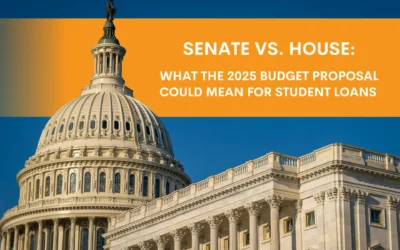To our valued clients and readers,
By now most of you know that your tax filing strategy plays an important role in your loan repayment and forgiveness strategy. But with the CARES Act behind us, new repayment options available, and multiple incentive programs currently being offered, there are some new considerations for this year that we would like to point out to help you maximize savings. We have taken the time to update nearly all tax tips and compiled them all in this article for your benefit. Happy filing!!
Return To Payment Considerations
First, let’s summarize where things stand with the payment and recertification pause. We are officially back in repayment after 3.5 years of the CARES Act payment and interest pause. Your payment amount should be the last calculated payment you received at your last recertification. This is a good thing if you’re making more money now. You will keep that payment amount for at least 6 months after payments start before you are required to recertify your IDR payment plan. Some borrowers won’t have to recertify for a full year after payments resume. Others are already being prompted to recertify their payment amounts to update in March or April. Remember, recertification requires paperwork and downloading the most current tax return on file or using paystubs to prove your income. So doing some advanced planning and forecasting here can save you a lot of money.
Tax Filing Extensions
Many borrowers recertify between May and October each year, as that is when you likely entered repayment originally. So, if you file your taxes by the normal deadline (around April 15th) each year, then that recent tax return will be used to calculate the payment. Filing an extension out to October 15th may benefit you by allowing you to recertify using your previous tax return (2022 vs 2023 in this case), and help you lock in a lower payment. Repeating this process each year can add up to tremendous savings in the end.
Example: You’re a physician in pursuit of PSLF. Projections show your payment amount in your practicing years is around $3000 per month. If you employ the tax extension strategy before or during your transition to practice, you lock in another year of payments based on your training income (typically around $200). This shaves off a year of practicing income on the back end, saving you about $33k!
Another reason to consider filing a tax extension, specifically for 2023 returns, would be for those considering switching IDR plans to the new SAVE plan. Switching plans always requires new income documentation, and you obviously want to document the lowest amount possible. On that note, we recommend that most borrowers (especially those with dependents) reassess their repayment options on account of the drastically increased poverty level deductions offered through the SAVE plan.
Note that if you file an extension, you must still pay any taxes owed by the deadline (April 18th for 2023 filings) to avoid possible interest and penalties. Plan accordingly by still calculating your taxes as you normally would. Make payments before the deadline if applicable. Then wait as late as October 15th to do the actual filing.
MFJ vs MFS
For married couples, payments can now be reduced in ALL IDR plans by filing taxes with the status Married Filing Separately (MFS). Though this status typically increases the tax liability for the household, it often results in substantially lower IDR payments, and therefore increased savings under the PSLF or IDR forgiveness plans. When trying to decide if MFS is a good strategy, it is critical that you weigh those two dynamics against each other. To do this, run both scenarios… MFS and MFJ. Then consider the increased tax liability (if there is any) vs. the difference in monthly payments, and how forgiveness is impacted. A good rule of thumb is that you should evaluate if MFS will deliver savings when your spouse is earning $30k or more and has little to no federal student debt.
It is also worth noting that you can go back and amend taxes up to three years back. If you employ the MFS strategy, and the cost is significant, you could go back and capture the savings you would have achieved under MFJ. Confirm with your CPA the costs, risks and other considerations for amending tax returns.
Community Property States:
(Arizona, California, Idaho, Louisiana, Nevada, New Mexico, Texas, Washington, Wisconsin)
There’s an additional consideration if you live in one of the above “Community Property” states.
If you choose to file MFS in these states, 50% of the household income generally gets reported on each person’s tax return, regardless of what portion of your household income you contribute. If your spouse makes less than you, this is a good thing. If your spouse makes more than you, it will unfortunately result in your payment being higher. Note that some states vary in how they define and assess community property, so be sure to check with your CPA.
Luckily, there is a workaround. After linking up your tax returns in the IDR application, select the “my income has significantly changed” option. From there you may submit a payroll stub showing your individual income. The servicers don’t really care that you’re in a CP state and will typically still honor the requested separation of incomes when calculating your payment.
Example: You’re a resident with a $60k income. Your spouse is a pharmacist in the private sector earning $120k. Your household income is $180k, therefore your payment is based on $90k. Using the workaround above your payment will be based on $60k, and decrease substantially.
Claiming and Updating Dependents
Another decision point which often arises when considering MFS is which spouse should claim the dependents. We’ll avoid all the technical explanations here and just say it usually works out better for the spouse with the student loans to claim the kids. After-all, the goal of doing MFS is to reduce your AGI. Claiming as many dependents as possible is another great way to achieve that goal. And our friends over at Larson Tax Partners concur.
When you are recertifying your income driven repayment plan, you need to check “Yes” my family size will change over the next 12 months.” Even if you don’t think it will, still mark yes, as you have not recertified for years, and they probably do not have your correct family size on file to determine your payment amount. Especially for those on the SAVE Plan, it is imperative that they have the correct family size since it uses 225% of the poverty level to calculate your payment.
Be Mindful of Payment Caps
We know that remembering all the features and rules for each IDR plan isn’t practical, unless you’re like us and you navigate student loans for a living. Borrowers who are focused on MFJ vs MFS separately and trying to employ all of the tips above sometimes forget that most IDR plans actually have a ceiling for how high your payments can go. Aside from the new SAVE plan, all other IDRs cap your payment at the 10-year payment equivalent based on the date you entered the plan. So, let’s say you have $250k in student loans. Your 10-year payment is around $2500 per month. If you hit a point where your income alone is enough to push your payment up to that $2500 threshold, there is no need to do MFS. You can file MFS, recapture all of those tax incentives, and still have a $2500 payment either way. Again, if you’re in a Community Property State, be sure to factor in the impact of you making more than your spouse and reducing your AGI and payment.
Help If You Need It
If you’re struggling with this complexity you’re not alone! US tax laws are already complicated enough to give most people a headache. Many of us gladly pay a CPA a few hundred dollars just to take it off our plates. Factoring in student loans, plus entering into repayment, takes the complexity to another level. That is why many borrowers work with us on an ongoing basis to not only map out their loan repayment strategy, but also ensure savings are maximized along the way. Our advisors are not CPAs. But they do have the knowledge needed to employ the above strategies, ask the right questions, and even coordinate with your CPA to ensure your tax and student loan strategies are always complementing one another. So, if you’re not a current client, or it’s been a while since we’ve connected, this is the perfect time to register for a comprehensive student loan consultation and get a plan in place to stay ahead of this rapidly changing student loan environment.
*DWOQ does not provide specific tax advice or filing services for individuals, nor are we able to assume what your tax liability is based on your profile. We provide strategies for navigating your student loan repayment options. We recommend you consult a tax professional to determine your tax liability depending on how you file.
Brandon Barfield is the President and Co-Founder of Student Loan Professor, and is nationally known as student loan expert for graduate health professions. Since 2011, Brandon has given hundreds of loan repayment presentations for schools, hospitals, and medical conferences across the country. With his diverse background in financial aid, financial planning and student loan advisory, Brandon has a broad understanding of the intricacies surrounding student loans, loan repayment strategies, and how they should be considered when graduates make other financial decisions.





